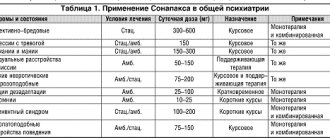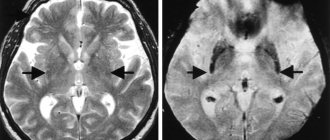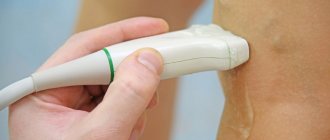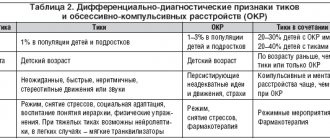Tremor is a movement disorder. From the outside it looks like small vibrations of certain parts of the body. Hand tremors are widespread - these involuntary movements greatly complicate the lives of patients, because they do not allow them to perform simple actions, and often even take care of themselves, although technically this condition does not cause a danger to life and does not shorten it. This problem is typical for people over 65 years of age, and the older the patient gets, the more it progresses. But this depends on the specific disease - often tremor, which arose under the influence of certain factors, also disappears after eliminating these same factors.
Causes of limb tremors
Tremor of the limbs can be physiological or pathological. Physiological tremor is not very pronounced, less noticeable than pathological.
Pathological tremor of the limbs is a symptom of more severe diseases of the nervous system or brain cancer. Among the main causes of tremor are:
Osteochondrosis. Due to pinching of the spinal nerve fibers, circulatory and nutritional disorders occur. Along with tremor, swelling of the face and cardiovascular disorders often appear;
- Alcohol and drug addiction. Taking excessive amounts of alcohol or medications can cause tremors;
- History of trauma. Damage to the nerve roots due to trauma is often reflected in the form of tremors;
- Dysfunction of the central nervous system. The tremor may begin as mild twitching. As the condition worsens, the severity of the symptom increases;
- Psycho-emotional experience. Most often, tremors due to stress occur in infants. This is a variant of the norm if the symptom appears sporadically.
- Excessive mental stress. Worries teenagers or students during exam periods. If severe headache, loss of coordination, aggression or apathy appear along with tremor, you should consult a doctor;
- Degenerative changes in the brain. Diseases such as Parkinson's disease and dementia can be accompanied by tremors. You can control the severity of symptoms with the help of medications that are selected by your doctor.
Depending on the severity of the disease, the frequency and amplitude of limb tremors may vary. If such symptoms are ignored, the consequences can be extremely severe and pose a threat to human life.
Hand tremors
Thyrotoxicosis
Diabetes
Stroke
Encephalitis
30183 November 25
IMPORTANT!
The information in this section cannot be used for self-diagnosis and self-treatment.
In case of pain or other exacerbation of the disease, diagnostic tests should be prescribed only by the attending physician. To make a diagnosis and properly prescribe treatment, you should contact your doctor. Hand tremors: causes of occurrence, what diseases cause them, diagnosis and treatment methods.
Definition
Tremor is a medical term for trembling in various parts of the body caused by contraction of antagonist muscles. Hand tremor can be either a physiological reaction of the body to severe fear, fatigue, hypothermia, alcohol intoxication (physiological tremor), or a symptom of a number of serious diseases (pathological tremor).
Types of tremor
By localization:
- focal tremor - affects only one anatomical area, for example, arms, head, jaw;
- segmental tremor - involves two or more adjacent parts of the body, for example, tremor of the arms and head;
- hemitremor – trembling spreads to several areas of the body on one side;
- generalized tremor - trembling is widespread and affects simultaneously the arms, legs, head, tongue and voice.
In relation to movement:
- rest tremor;
- action tremor.
According to the vibration frequency,
hand tremors are divided into 3 groups:
- low frequency (less than 4 Hz);
- mid-frequency (4–8 Hz);
- high frequency (8–12 Hz).
The amplitude of
the vibration is divided into:
- to low amplitude,
- medium amplitude,
- high amplitude.
According to severity:
- slight tremor;
- moderate tremor;
- significant tremor;
- pronounced tremor.
Depending on the cause:
- hereditary;
- acquired.
Based on the presence of accompanying symptoms:
- isolated - tremor is the only symptom;
- combined – other neurological symptoms are present.
Possible causes of hand tremor
Physiological tremor is called tremors in the hands against the background of emotional overexcitation, fatigue, fever, after heavy physical exertion, when taking certain medications, coffee, alcohol, or smoking. This type of tremor usually goes away on its own once the underlying cause is eliminated.
Pathological tremor can be a symptom of a fairly large number of diseases.
Endocrine disorders When
the level of thyroid hormones is elevated,
a person often experiences trembling in his hands. In addition, there may be weight loss with increased appetite, muscle weakness, a feeling of heat at room temperature, the skin becomes warm and moist, the heart rate increases, the patient becomes quick-tempered, overly emotional, and the volume of the thyroid gland gradually increases.
In patients with diabetes mellitus
with a sharp decrease in blood glucose levels, not only trembling of the hands, but also clouding of consciousness, even fainting, may be observed. Patients with diabetes need to control their sugar levels and not skip meals.
Metabolic disorders In a rare hereditary disease - Wilson-Konovalov disease
– hand tremors can appear at a young age. The cause of the disease is a violation of copper metabolism in the body; it begins to be deposited in the tissues of organs, disrupting their functioning.
Pathologies of the cardiovascular system
Patients with hypertension
may experience tremors in their hands when their blood pressure rises sharply.
Neurological pathologies Parkinson's disease
– a slowly progressive neurological disease, most common in older people. The exact cause of this disease is still not clear. In Parkinson's disease, hand tremors are one of the first symptoms, appearing at rest, and are eventually joined by head tremors. The tremor increases with excitement and physical activity; in addition, there is an imbalance, muscle weakness, gradual decline of cognitive abilities, memory loss, and depression.
Currently, Parkinson's disease is incurable, but existing treatment methods, especially with timely diagnosis, significantly improve the course of the disease.
Lesions of the cerebellum
as a result of cancer, trauma, encephalitis or stroke are characterized by the so-called large-scale tremor. In addition to trembling, gait and coordination of movements are impaired.
Essential tremor is distinguished separately
. This is a hereditary disease of the nervous system, in which there is a moderate intensity trembling of the hands that occurs during movement and gradually progresses. The disease often begins in middle age, does not affect other body functions, and does not affect mental abilities or memory. In old age, tremor increases, which can lead to a significant decrease in quality of life.
Essential tremor is often mistaken for Parkinson's disease, a much more serious disease that leads to severe disability.
Diseases of the musculoskeletal system In some cases, osteochondrosis of the cervical spine
may cause trembling and numbness in the hands.
Autoimmune diseases
Tremor in
multiple sclerosis
is one of the most common symptoms, and tremors appear not only in the hands, but also in other parts of the body.
Another possible cause of hand tremors is poisoning with toxic substances.
, for example, carbon monoxide, salts of heavy metals.
This is a life-threatening condition that requires immediate medical attention. Trembling hands can become a side effect when taking certain medications (neuroleptics, antidepressants, psychostimulants, some antiarrhythmic drugs, medications for bronchial asthma, etc.).
Which doctors should I contact for hand tremors?
Hand tremors may occur in emergency situations. Increased blood pressure, a sharp decrease in glucose levels in patients with diabetes, injury, stroke - these conditions require immediate medical attention.
In other cases, the first specialist to whom patients turn when tremors appear in their hands becomes. If necessary, consultation may be required; , psychotherapist.
Diagnosis and examinations for hand tremors
Primary diagnosis consists of examining the patient and carefully collecting anamnesis, the doctor specifies the time of onset of the problem and accompanying symptoms, asks the patient to perform several tests: for example, pour water from a cup, write something with your eyes closed (Gibson and Khersonsky maze test), etc. d.
To identify the cause of tremor, or more precisely, the disease that caused hand tremors, laboratory and instrumental diagnostics are prescribed.
Laboratory tests
- To exclude endocrine pathologies, a blood test is performed for thyroid hormones (free thyroxine (T4), free triiodothyronine (T3)), thyroid-stimulating hormone (TSH), antibodies to thyroid peroxidase, antibodies to thyroglobulin, and the level of insulin and cortisol is examined.
Diseases that cause trembling of the limbs
There are various diseases, the presence of which can lead to tremor. Among them are:
- Endocrine pathology: hyperparathyroidism, thyrotoxicosis, pheochromocytoma, hypoglycemia;
- Strokes of various origins;
- Infectious diseases: encephalitis, neurosyphilis;
- Metabolic disorders: Wilson-Konovalov, Hallervorden-Spatz disease;
- Tumors: angiomas, cancer, hematomas;
- Polyneuropathy of various origins.
- Neurological pathology: multiple sclerosis, encephalopathy, cerebral palsy, Alzheimer's disease, Parkinson's disease, Pick's disease, Huntington's chorea, cerebellar degeneration.
In most cases, tremor is a symptom of Parkinson's disease. There is an opinion that this is a problem for older people (previously this was considered the norm). But essential tremor (also called “hereditary”) now occurs in young people, and the proportion of such cases reaches 20%.
General information
Essential tremor was described in detail by L. S. Minor in 1929. The author emphasized the distinctive feature of this type of tremor - its manifestation during muscle tension and movement. He noted the hereditary nature of the disease. Today, literary sources on neurology mention the pathology with synonymous names: Minor's disease, hereditary tremors.
The incidence of pathology increases with age. According to various data, among people under 40 years of age, essential tremor is observed in 0.3-6.7%, after 70 years - in 8-17%. Morbidity statistics do not provide accurate figures, since the benign nature of tremor leads to a reduced referral of patients to doctors. There are also diagnostic errors - sometimes trembling is regarded as Parkinson's disease.
Essential tremor
Causes of internal tremor
Internal tremors in the body are a common phenomenon that can be caused by a sharp drop in temperature. The development of internal tremor occurs as a result of the production of hormones in a stressful situation for the body. These hormones help overcome unpleasant conditions, but they may not be fully used. A short tremor that occurs as a result of an excess of hormones in the body does not pose a danger to human health.
Severe body tremors may indicate the development of a pathological process in the body. Tremor brings discomfort to a person; in most cases, it is difficult to cope with pathological tremor on your own.
Parkinson's is in second place among neurodegenerative diseases, second only to Alzheimer's disease. 8 out of 10 cases of Parkinson's disease develop unnoticed and usually manifest themselves only in disturbances in motor activity: muscle rigidity or hypertonicity, stiffness of movement.
Tremor is not always associated with Parkinson's disease; it can often indicate serious autoimmune processes or disorders of the central nervous system, endocrinological disorders, or side effects from taking medications. In any case, you need to undergo an examination and first of all check the brain using MRI, CT, and EEG.
Causes
The etiology of the disease is closely related to genetic disorders transmitted in an autosomal dominant manner. If one parent suffers from tremor, the child has at least a 50% chance of developing it. Along with cases with clearly traceable heredity, there are many sporadic forms when a similar pathology is not detected among the relatives of the patient.
Recent advances in genetics have made it possible to determine that several genes are responsible for the development of hereditary tremors. Two are located in the q13 locus of the 3rd chromosome, one is on the short arm of the 2nd chromosome. Apparently, gene aberrations lead to disturbances in the extrapyramidal system, which is responsible for the regulation of posture and muscle tone. The morphological structures of this system are the thalamus and subcortical nodes, however, degenerative changes in them are detected on MRI only in some patients.
Tremor degrees
Determination of the degree of tremor is required to establish the severity of the disease. Based on this criterion, the need to prescribe one or another therapy is judged. Tremor is divided into:
- Minor. Rare attacks that recur at regular intervals. The symptom does not affect the patient's quality of life.
- Moderate. Tremor prevents small movements. In this regard, the quality of life and ability to work decreases.
- Significant. A pronounced pathological symptom is the cause of disability. The patient cannot care for himself due to lack of control over movements.
How to react correctly to the appearance of tremor?
Tremor is an unhealthy and dangerous symptom, so when it appears, you should not hope that everything will improve on its own. First, you need to admit that there is a problem and start working not only on it, but also on your consciousness. It is recommended to relax, adjust your diet, daily schedule, sleep and rest patterns. Literature, music, films, sports, favorite hobbies are the best helpers when psychogenic tremors occur, as they allow you to escape from panic, anxiety, and negative thoughts. Try to cope on your own, using self-control and introspection, trying to focus on the positive. Live life to the fullest, move, use humor to relieve stress and maintain a cheerful outlook on things.
If you manage to cope with the problem, then this is a big victory, giving you the opportunity to return to normal life. If, after self-prevention, you continue to be haunted by tremors that interfere with everyday activities, you will need to immediately seek professional help from a psychotherapist.
Leg tremors
Leg tremors are usually a nonspecific pathology that leads to serious disorders in humans. This symptom becomes the first signal about the possible presence of a disease and requires a thorough diagnosis and consultation with a doctor.
If, after a detailed diagnosis, pathological abnormalities are discovered, then long-term and high-quality treatment is required. Treatment of leg tremor with a pathological deviation requires increased responsibility, namely:
- in mild forms of the disease, the patient is advised not to be in uncomfortable positions, the presence of objects near the body is undesirable, and things should not be squeezed tightly when grasping.
- small doses of alcohol can help eliminate shaking. But you should not overdo it, since alcohol in large doses, on the contrary, will increase the tremor.
- if the disease interferes with a person’s everyday life and normal pace of life, medications are prescribed, namely beta blockers. They reduce the amplitude of trembling of the arms and legs, and sometimes completely eliminate this symptom.
- Surgery is done only in extreme cases when tremors interfere with a person’s normal functioning. (For example, the patient cannot eat on his own.) The operation is performed by stimulating the cerebellum with electric current.
Previously, it was impossible to get rid of pathological tremor. But now, thanks to modern medicine and medications, it is possible to significantly reduce tremor and improve the patient’s standard of living. You can make an appointment with a neurologist by calling the Yusupov Hospital.
Treatment
Conservative therapy
Treatment of tremor is intended to reduce functional limitations and social maladaptation of patients. The basis of therapy is conservative methods, which are usually symptomatic. If secondary tremor is detected, treatment involves eliminating the causes of its occurrence and correcting the underlying pathology. Among the therapeutic measures used:
- Lifestyle optimization.
It is necessary to avoid situations that increase the intensity of trembling. In the early stages of the disease, patients are recommended to master adaptive methods - use pens and cutlery with thick handles, blunt scissors and knives, phones with voice control, etc. - Physical methods.
Methods of physical influence include the use of special orthoses that limit the mobility of the hand in the wrist joint. Assistance in mastering simple motor patterns is provided by physical therapy and occupational therapy, which are complemented by massage, reflexology and balneotherapy. - Pharmacotherapy.
Several groups of drugs are indicated for the treatment of tremor. Based on clinical feasibility, anticonvulsants (primidone, topiramate, gabapentin), antiparkinsonian drugs (levodopa, amantadine, pramipexole), beta-blockers (propranolol, atenolol, nadolol) are prescribed. For severe tremors of the head and voice, botulinum toxin A injections are performed.
Essential tremor: causes and symptoms
Essential tremor, whose causes, treatment, and symptoms are still being studied, is a neurological disorder characterized by involuntary jerking of the arms, head, or legs. Essential tremor (Minor's disease) is also called hereditary or familial tremor, since a genetic predisposition is clearly visible in patients with this pathology.
Essential tremor is a hereditary disease. Scientists cannot yet say definitively what mechanisms cause changes in genes that manifest themselves in this way. Research has revealed that patients with essential tremor have mutations in the ETM1, ETM2 and FET1 genes. However, even the presence of these mutations does not provide a 100% guarantee that their owners will develop essential tremor. There are several factors, the presence of which may indicate the development of pathology:
- hereditary factor. Mutational genes for essential tremor have an autosomal dominant pattern of inheritance. The presence of a defective gene in one of the parents means that in 50% of cases the child may be at risk of developing the disease. However, the presence of the disease even in both parents will not mean that the disease will also manifest itself in the child. However, in such a situation, a person needs to be very responsible about his health and visit a neurologist for preventive examinations;
- pathological factor. Failure in the interaction of brain structures (thalamus, cerebellum and brain stem) may be due to the development of a disease or traumatic brain injury. At the same time, in people with a genetic predisposition, the likelihood of developing essential tremor increases significantly.
Most often, essential tremor appears at the age of 45-50 years. This disease cannot be called very rare: according to various sources, it is diagnosed in 3-5% of the population of developed countries. Essential tremor is manifested by trembling of a limb or head, which can occur suddenly and makes it difficult to perform simple movements.
Essential tremor is classified according to severity as follows:
- slight trembling, appears periodically;
- moderate tremors, which have minimal impact on the patient’s well-being;
- severe trembling, making it difficult to perform daily work;
- significant tremors: significantly worsens the patient’s condition, can lead to disability, and is difficult to treat.
There are some situations that can increase tremors. Stress of various kinds, including emotional or physical, can increase the amplitude of trembling and the frequency of movements. Therefore, patients with essential tremor are not recommended to experience any stress and should protect their nervous system from overstrain.
The clinical manifestations of essential tremor will depend on the part of the body that is most affected by the shaking.
Essential head tremor has the following manifestations:
- the patient makes unreasonable nodding movements;
- trembling of the tongue occurs, which makes speech difficult;
- a change in the timbre of the voice during an attack of tremor, so speech acquires a vibrational character.
Essential head tremor occurs less frequently than hand tremor. It is also explained by hereditary predisposition. Patients may not always notice some signs of this pathology (for example, speech impairment).
Classification
Tremor or trembling is a motor disorder, which in the structure of neurological syndromes belongs to hyperkinesis. By origin, it can be primary (essential) and secondary, which is a sign of an underlying disease, intoxication or the effects of medications. Taking into account etiopathogenetic features, two types of tremor are distinguished:
- Physiological.
Occurs in healthy individuals, is characterized by low amplitude, and is not visually detected. Physiological tremor is a normal mechanism of motor control, is enhanced by external factors, but can be consciously reduced by the patient himself. - Pathological.
Caused by various disorders in the central or peripheral parts of the nervous system. The most common variants are parkinsonian, cerebellar, and essential tremor. There are also dystonic, neuropathic, orthostatic and some other types.
Considering the clinical and morphological features, we distinguish between slow (in the range from 3 to 5 Hz) and fast tremors (6-12 Hz), low- and high-amplitude (small- or large-scale), intermittent or constant. An important criterion for systematization is the conditions of development, according to which rest tremor and action tremor are distinguished (action tremor). The latter has several varieties:
- Postural (static).
Caused by maintaining a stationary position of body parts (arms extended forward and spread to the sides, head). A type of tremor is considered to be positional tremor, characteristic of strictly defined positions. - Kinetic.
Associated with motor acts. Simple kinetic tremor occurs during any non-purposeful movements. Intentional trembling intensifies as a goal is achieved. - Kinesiospecific.
It is observed only during certain narrowly focused actions. A typical example is writing tremor, which is absent in other situations involving the same muscles. - Isometric.
Occurs under conditions of isometric muscle tension, with strong contraction without movement. Such trembling is observed when clenching a hand into a fist or holding a heavy object.
Topographic classification involves dividing tremor depending on location. Focal affects only one anatomical zone (hand, head, soft palate, etc.), segmental covers adjacent areas (bibrachial), when several areas are affected on one side, hemitremor is noted, and involuntary movements throughout the body suggest generalized tremors. When making a diagnosis, the time of first appearance of the symptom, family history, and connection with the use of certain substances are taken into account.
Symptoms of limb tremor
As already mentioned, tremor of the upper and lower extremities can be a physiological or pathological manifestation. Physiological tremor goes away on its own after eliminating the irritating factors. Physiological tremor appears during stressful situations, physical activity, and the patient is bothered by trembling of the arms or legs. This condition does not last long and goes away when the person comes to a state of rest. This symptom is the body’s response to stress and goes away without the help of doctors or medications.
Tremor of the limbs can appear at rest, as well as during active movements. For example, when holding an object in front of you, straightening your arms, or performing small precise movements, the tremor of the limbs is especially pronounced. Also, prolonged muscle contraction increases the symptoms of tremors in the limbs. Tremor of the limbs in people who abuse alcohol manifests itself in the form of shaking, often in the morning, and goes away after a certain time. Some medications can also cause tremors in the limbs, which disappear after treatment ends.
The manifestation of limb tremors is enhanced by factors such as alcohol abuse, strong coffee, psychological stress, the transition period and other disorders in the body.
Physiological (benign) tremor
- Excitement, fear and anxiety are a fairly common explanation for why arms and legs shake. This state is well known to emotional people who are intensely experiencing certain events and who take everything that happens around them to heart. In such situations, people say “the ankles are shaking,” implying feelings of strong excitement. Once a person calms down, the tremor disappears on its own.
- Prolonged physical stress is another cause of involuntary trembling of the limbs. Professional athletes, people whose profession involves strenuous work with small objects (jewelers, watchmakers, surgeons), as well as loaders - it is not uncommon for them to experience muscle trembling under tension.
Why do young and old hands shake?
- Trembling limbs in infants is often due to the fact that their nervous system is not fully formed. Temporary tremor occurs under the influence of various stimuli: for example, the child is hungry, scared, does not want to bathe, change clothes, etc., and against the background of all this, rhythmic muscle contraction can be observed. Of course, parents need to ensure that the baby is monitored by a specialist to make sure that the baby’s development is progressing normally (tremors are often observed in the first months of a child’s life in cases where there was a difficult pregnancy and/or birth injuries).
- Hand trembling at a young age can be associated not only with anxiety (for example, during exams), physical overexertion during sports training, but even with ordinary hypothermia. The latter sometimes leads to involuntary muscle contraction, resulting in shaking hands. Another reason for shaking hands in teenagers is hormonal imbalances.
- People who abuse alcoholic beverages and also take various stimulants (drugs, tranquilizers) deserve special attention. Why are their hands shaking? Alcohol and drugs overstimulate nerve cells (resulting in uncontrolled muscle contraction), which can lead to damage to the nervous system and brain.
Alcohol addiction is one of the reasons why hands shake
It should be noted that temporary trembling of the hands can be a consequence of the effects of tonic drinks (strong tea, coffee), as well as medications. Before taking any medicine, you need to carefully study the instructions - tremor may be indicated in the side effects section (some chemical compounds, affecting the psychoneurological sphere, cause undesirable consequences).
If trembling of the limbs is a functional disorder, it is enough to eliminate the provoking factor, and the unpleasant phenomenon will go away on its own. For example, in case of alcohol poisoning, it is necessary to detoxify the body, and hand tremors will disappear (provided that at this stage brain damage has not yet occurred and toxic polyneuropathy has not developed). If the tremor bothers you for a long time (more than two weeks), you need to undergo an examination.
Diagnosis of tremor
The sooner the study is carried out, the faster the causes of tremor can be established. Doctors at the Yusupov Hospital conduct a full range of examinations necessary to diagnose tremor. New equipment allows you to quickly and effectively determine the causes of the disease and conduct a course of appropriate therapy. According to international recommendations, to identify the etiological factor of tremor, the following examinations are required:
- CT. Thanks to the study, it is possible to identify pathological foci in the brain.
- Positron emission tomography. Allows you to assess the functional ability of the parts of the brain responsible for coordination of movements.
- MRI. Informative research method. Allows you to identify changes in the structure of the brain at the initial stages.
- Electroencephalography. A research method based on recording the bioelectrical activity of the brain.
- Electromyography. A study prescribed to determine the functional capacity of the neuromuscular system.
The scope of diagnostic measures is determined individually. It depends on the severity of the condition, the age of the patient and the presence of concomitant diseases.
Diagnostics
The cause of hand tremors can be identified based on the results of a comprehensive examination. At the initial stage, a neurologist correlates clinical symptoms with diagnostic criteria and makes a preliminary conclusion, but it is almost impossible to determine the source of disorders without additional research. For trembling hyperkinesis, the following procedures are recommended:
- Laboratory tests.
To exclude endocrine diseases, a spectrum of hormones (thyroid, corticosteroids, insulin) is examined. In a biochemical blood test, renal tests (urea, creatinine), acute phase indicators, and ceruloplasmin concentration are assessed. Toxicological examination helps to identify harmful substances; in case of neuroinfections, serological diagnostics and cerebrospinal fluid analysis are performed. - Tomography.
Signs of focal or diffuse damage to the central nervous system are an indication for performing a CT or MRI of the brain. Neuroimaging methods are used to diagnose tumors, hematomas, and strokes. In hereditary diseases, cerebellar atrophy and demyelination of the white matter are determined. PET-CT indicates the localization of functional disorders. Vascular involvement is confirmed by MR angiography. - Tremorography.
To assess the activity of antagonist muscles, tremorography with accelerometric or electromyographic recording methods is used. According to EMG data, the frequency and pattern of contractions, the influence of cognitive load are determined, and the presence of a central oscillator is assumed. A neuromuscular conduction block indicates the presence of neuropathy.
Some authors propose to study the time-frequency properties of EEG signals to diagnose the early stages of Parkinson's disease. In case of endocrine pathology, ultrasound of the thyroid gland and adrenal glands is prescribed; displacement of the midline structures during volumetric processes can be seen using echoencephalography. The doctor has to differentiate between various diseases accompanied by tremor, and distinguish it from other hyperkinesis.







